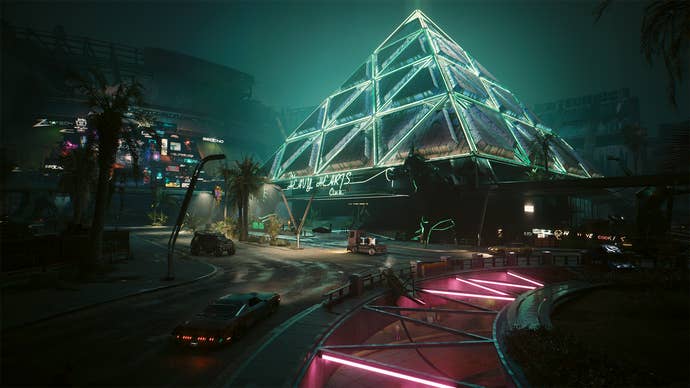Cyberpunk 2077 Phantom Liberty’s Dogtown is better than the entire base game map
[ad_1]
After an almost three year long wait, the first (and only) expansion for Cyberpunk 2077 is here. Phantom Liberty offers a whole new storyline to explore, one that sees you getting wrapped up in a political spy thriller as you’re tasked with saving the president of the NUSA. It also adds in a whole new area to explore, Dogtown, a cordoned off section of Night City that has its own rules and militia. Dogtown isn’t the biggest area compared to the rest of the game’s locales, but honestly? I think it’s better than the entire rest of the map.
Yesterday I wrote about my feelings on how Cyberpunk has changed with its 2.0 update, and how we shouldn’t really be saying “it was always good,” because I do think there are some bigger problems that a skill tree overhaul and various other tweaks can’t fix. One of my problem’s is Night City itself. For a futuristic city, I think big parts of it aren’t all that interesting.
As I outlined in yesterday’s piece, there are pockets of interesting places to find in Night City. In particular I like Pacifica, because from its design alone you can quickly garner it’s not quite as affluent as other areas in Night City. But again, spaces like these that I feel genuinely interested in exploring feel few and far between; all the other monolith buildings exist for no other purpose than set decoration.
It’s no surprise, then, that I like Dogtown when it’s quite literally situated right next to the Pacifica district. Much like the rest of Pacifica, it’s not really a place you can easily visit but you will find a lot of interesting spaces to visit. There’s a club that has stacks of giant playing cards adorning its entrance, a glass pyramid reminiscent of the Luxor Las Vegas casino hotel, and even an area that feels closest to Disney’s Epcot.
The architecture of Dogtown is what helps it stand out compared to the rest of Night City. At the front of Dogtown, or at least the part that faces the rest of Night City, you can quite easily see tall, modern buildings similar to what you’d see round the rest of the map. Though the big difference is that they’re unfinished, clearly abandoned construction projects left behind due to it previously being a war zone.

Behind all of that you’ll find two sets of architectural styles: art deco, and brutalism. The two aren’t all that dissimilar, but it’s clear that it’s a town caught between two time periods, struggling to move on from its history, but one it can’t manage to do from an obvious lack of funds. Without even playing the expansion’s story you can quickly get the gist of what happened here.
Because of all that, Dogtown feels a lot more purposeful of a place than the rest of Night City does. It’s more compact, but you’re even given a tiny car to help navigate it. That compactness is a boon, though, because everything feels so much more quickly recognisable to me in a way the rest of the map hasn’t quite managed to. It feels like CD Projekt Red really wanted to leave an impression on the player that this is its own place, its own mini-world with its own rules.
Personally, I find the constant need for bigger and bigger maps to be a bit tedious, because it’s rare that anyone can actually pull it off (not every game can be Tears of the Kingdom). Dogtown is a great argument for scaling back, and opting for something more personal. It feels like a character of its own, just as much as Solomon Reed and Song So Mi are. Hopefully, this is just CD Projekt setting the stage for its followup, because if they can pull this level of detail off again, I’ll want to jump back into Cyberpunk’s world.
[ad_2]
